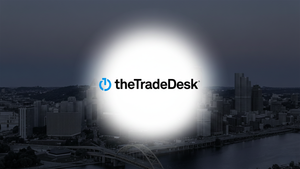
São Paulo, Brazil – The recently concluded Digital Assets Conference (DAC) 2025, held on September 22-23, 2025, in São Paulo, has solidified Latin America's position as a burgeoning hub for digital finance innovation and institutional engagement. The high-profile event brought together a formidable roster of global and regional finance and digital asset leaders, underscoring a palpable shift towards mainstream adoption and integration of digital assets within traditional financial structures across the region.
The conference served as a critical forum for discussing the future of digital finance, with a strong emphasis on regulatory clarity, the transformative potential of tokenization, and the increasing role of stablecoins and Central Bank Digital Currencies (CBDCs). The consensus among attendees pointed to an accelerating pace of institutional involvement, driven by a combination of economic factors unique to Latin America and a global push for modernized financial infrastructure.
Unpacking the Digital Assets Conference 2025: A Deep Dive into Latin America's Crypto Ascent
The Digital Assets Conference 2025, meticulously organized by Mercado Bitcoin (Latin America's largest digital asset platform) in collaboration with global financial giants such as BlackRock (NYSE: BLK), CME Group (NASDAQ: CME), Fireblocks, Galaxy Digital (TSX: GLXY), FalconX, Wormhole, and Tether, marked a pivotal moment for the region's digital finance landscape. Building on the success of its 2024 predecessor, which also featured partnerships with CME Group, Deribit, and Fireblocks, this year's event showcased an expanded scope and heightened institutional participation.
Discussions at DAC 2025 spanned critical topics including advanced crypto adoption strategies, the burgeoning field of tokenization, the development of robust regulatory frameworks, the utility and impact of stablecoins, the evolution of digital asset infrastructure, and sophisticated investment strategies tailored for institutional players. A key highlight was the continued focus on Brazil's own digital real (DREX) and the broader implications of CBDCs for financial markets, reflecting a proactive approach by regional central banks to embrace digital innovation while maintaining financial stability. The Central Bank of Brazil's efforts to finalize a comprehensive regulatory framework for digital assets by the end of 2025, following the enactment of its Virtual Assets Law (BVAL) in June 2023, were a recurring theme, signaling a commitment to fostering innovation within a secure and regulated environment.
The conference underscored Latin America's unique drivers for crypto adoption, including currency volatility, persistent inflation, and broader economic pressures, which have positioned digital assets as a compelling alternative for both individuals and institutions. Brazil, alongside Argentina and Mexico, has emerged as a powerhouse in the regional crypto economy, with Brazil leading the charge. The presence of major traditional finance players like Itaú Unibanco (NYSE: ITUB), which announced in April 2025 its exploration of a stablecoin launch, exemplifies the growing institutional confidence and active exploration of digital asset integration within the established financial sector. This convergence of traditional finance with the digital asset space signals a maturing market, moving beyond speculative interest to a more structural and functional integration.
Initial market reactions to the conference have been overwhelmingly positive, with analysts pointing to increased investor confidence in the region's digital asset ecosystem. The clear emphasis on regulatory progression and institutional-grade solutions is expected to attract further capital inflows, as the perceived risks associated with the nascent market diminish. The collaborative spirit demonstrated by the diverse group of organizers and sponsors also suggests a unified effort to build a resilient and innovative digital finance future for Latin America.
Corporate Fortunes: Who Wins and Loses in Latin America's Digital Finance Surge
The accelerating institutional interest in Latin American digital finance, profoundly highlighted by the Digital Assets Conference 2025, is poised to reshape the fortunes of numerous companies across the financial and technology sectors. The proactive regulatory environment, particularly in Brazil with its Virtual Assets Law (BVAL) and the ongoing development of the digital real (DREX), is creating a fertile ground for innovation and significant market shifts.
Winners in the New Digital Landscape:
Mercado Bitcoin, as the host of DAC 2025 and the region's largest digital asset platform, stands to be a primary beneficiary. Its established infrastructure for crypto exchange, asset tokenization, and digital banking services for over 4 million clients positions it to capitalize on increased institutional adoption and regulatory clarity. The company's leadership in tokenized real-world assets (RWAs) and recent launch of $200 million in tokenized financial instruments on the Stellar network (XLM) exemplify its strategic advantage in an evolving market.
Global behemoths like BlackRock (NYSE: BLK) are strategically expanding their digital asset footprint into Latin America, viewing tokenized assets as the future of financial markets. Their participation in DAC 2025 underscores a clear intent to introduce their diverse digital asset investment products and strategies to the region's burgeoning institutional market, leveraging the success of products like their spot Bitcoin ETF (IBIT). Similarly, CME Group (NASDAQ: CME) is likely to see increased demand for regulated crypto derivatives as institutional interest grows, potentially prompting an expansion of its digital asset offerings in Latin America.
Fireblocks, a critical digital asset security platform, is exceptionally well-positioned for growth. With 71% of Latin American financial institutions already using stablecoins for cross-border payments—a rate significantly higher than the global average—the demand for Fireblocks' secure and compliant digital asset infrastructure will surge. The company already powers major institutions like Bancolombia Group's Wenia platform, demonstrating its established market presence.
Galaxy Digital (TSX: GLXY) has cemented its commitment to the region through strategic partnerships, notably with Itaú Asset Management, to launch Brazilian-listed, physically-backed digital asset ETFs, including a Bitcoin ETF (BITI11) on the B3 Stock Exchange (BVMF: B3SA3). Its comprehensive crypto financial services, from trading to asset management, align perfectly with the escalating institutional demand for regulated investment products. FalconX, an institutional digital asset prime broker, strategically expanded into Latin America in July 2025, partnering with key players like BTG Pactual (BVMF: BPAC11) and Mercado Bitcoin to provide essential prime brokerage services and global liquidity, directly capitalizing on the region's rapid crypto adoption.
Wormhole, a cross-chain interoperability protocol, is crucial for facilitating seamless asset transfers across diverse blockchains, addressing a key challenge in Latin America's multi-chain environment. Its partnership with Mercado Bitcoin highlights its growing relevance. Tether, whose USDT stablecoin acts as a "digital dollar" against currency instability, continues to benefit immensely, with strategic investments like in the Chilean exchange Orionx further solidifying its role in remittances, payments, and treasury services.
Domestically, Itaú Unibanco (NYSE: ITUB), Brazil's largest bank, is aggressively embracing digital assets. Its exploration of a Brazilian real-pegged stablecoin, along with existing digital-asset mutual funds, ETFs (including the country's first spot XRP ETF), and over $1 billion in digital asset custody, positions it as a frontrunner. The creation of "Itaú Digital Assets" and partnerships with firms like Galaxy Digital underscore its strategic pivot. Other regional players like BTG Pactual (BVMF: BPAC11), Bitso, and Nubank (NYSE: NU) are also poised to win by proactively integrating digital assets and offering innovative fintech solutions.
Potential Losers in the Transition:
The digital finance revolution poses significant challenges for traditional financial institutions that resist adaptation. Banks and asset managers clinging to legacy systems and failing to integrate digital assets risk losing market share, talent, and innovation opportunities to more agile competitors. Furthermore, unregulated or non-compliant digital asset platforms face an increasingly precarious future. As regulatory frameworks in Brazil and Latin America become clearer and stricter, platforms that do not meet robust compliance standards for security, KYC (Know Your Customer), and AML (Anti-Money Laundering) will face severe penalties and a loss of trust, potentially leading to their obsolescence.
Legacy cross-border payment services, reliant on slow and expensive traditional rails, will struggle to compete with the speed and cost-effectiveness offered by stablecoins and new fintech solutions. Lastly, purely speculative retail crypto platforms with insufficient security and regulatory oversight may see declining relevance as the market matures and institutional involvement deepens, shifting the focus towards utility, regulation, and robust security.
Wider Significance: Latin America's Digital Leap and Global Financial Evolution
The Digital Assets Conference 2025 in Brazil is far more than a regional gathering; it is a powerful indicator of Latin America's accelerated integration into the global digital finance ecosystem and a bellwether for broader industry transformations. The event underscores a fundamental shift from speculative crypto interest to a focus on practical utility, institutional integration, and robust regulatory frameworks.
This development aligns perfectly with several overarching industry trends. Firstly, the mainstreaming of digital assets is evident, with discussions moving beyond niche topics to core financial functions like investment strategies, stablecoin utility, and robust infrastructure. Secondly, the rise of stablecoins for utility is particularly pronounced in Latin America, where they serve as crucial tools for cross-border payments, remittances, and as a hedge against inflation in volatile economies. Mexico's leadership in stablecoin remittances and the fact that 71% of Latin American firms use stablecoins for cross-border transactions highlight this trend. Thirdly, the tokenization of real-world assets (RWAs) is gaining significant traction, promising to address inefficiencies and high costs in traditional capital markets by digitizing assets like bonds, equities, and real estate on blockchain. Finally, the development of digital public infrastructure, exemplified by Brazil's Drex (digital real) and its successful PIX instant payment system, signals a global movement towards integrating Distributed Ledger Technology (DLT) into national payment systems, enhancing financial inclusion and efficiency.
The ripple effects of this growing institutional embrace are profound. Rather than outright competition, there is a clear trend towards collaboration between traditional finance giants and crypto-native firms, fostering partnerships for liquidity, capital efficiency, risk management, and educational initiatives. This synergistic approach is driving significant innovation in financial services, with fintech companies developing new blockchain-based solutions that challenge and augment conventional banking. Ultimately, this leads to market deepening, as greater institutional adoption contributes to enhanced liquidity, sophistication, and reliability, making digital assets more attractive and accessible to a wider array of investors and businesses.
From a regulatory and policy standpoint, Brazil is at the forefront, setting a precedent for other nations. The enactment of Law 14.478/2022 (Brazilian Virtual Assets Law - BVAL) in June 2023, which defines virtual assets and outlines guidelines for Virtual Asset Service Providers (VASPs), is a cornerstone. The Central Bank of Brazil (BCB) has been designated as the primary regulator, actively working to finalize detailed rules on licensing, capital requirements, and conduct duties by the second half of 2025. This proactive stance, including listing virtual assets as a strategic priority for 2025-2026 and planning to regulate stablecoins and asset tokenization, aims to foster innovation while ensuring market integrity and consumer protection, aligning with international standards. Brazil is also exploring new digital competition legislation, akin to the EU's Digital Markets Act (DMA), which could further shape the digital asset market's competitive landscape.
Historically, Latin America's trajectory mirrors that of other emerging markets globally, which are increasingly "leapfrogging legacy payment systems and banking infrastructure" through digital asset adoption. The region's focus on stablecoins, as evidenced by events like the Stablecoin Conference 2025 in Mexico City, echoes similar trends in other economies grappling with currency volatility and expensive cross-border payments. The DAC Brazil, much like other global forums, facilitates crucial dialogue between industry stakeholders and regulators, a pattern observed worldwide as jurisdictions strive to integrate digital assets into existing financial systems while maintaining stability and fostering innovation.
What Comes Next: Navigating the Future of Latin American Digital Finance
The momentum generated by the Digital Assets Conference 2025 in Brazil, coupled with the undeniable surge in institutional interest, sets the stage for a transformative period in Latin American digital finance. The coming years will witness a dynamic interplay of regulatory evolution, technological innovation, and strategic adaptations, shaping the region's financial landscape.
Short-Term Possibilities (Next 12-24 Months):
In the immediate aftermath of the conference, regulatory clarity and implementation will be paramount. Brazil is expected to finalize its comprehensive Virtual Asset Service Provider (VASP) regulations by early 2026, with a grace period for compliance, following the Central Bank's prioritization of virtual asset and stablecoin regulations. Mexico is also aiming to complete its digital Peso by 2025, emphasizing financial inclusion. This concerted regulatory push across the region will provide a much-needed framework for institutional participation. We can also expect CBDC pilot expansion and launches, with Brazil's DREX project continuing its development to modernize wholesale payments, and other nations like Peru advancing their own digital currency initiatives. Growth in digital payments and cross-border solutions will accelerate, leveraging digital wallets, instant payment systems like Brazil's Pix, and blockchain-based solutions from companies like Ripple (XRP), Circle (USDC), and Tether (USDT) to streamline and reduce the costs of international transactions. The heightened focus on stablecoins will lead to further regulatory attention, aiming to establish clear frameworks for their issuance and usage given their significant role in regional crypto transactions.
Long-Term Possibilities (Beyond 24 Months):
Looking further ahead, widespread Real-World Asset (RWA) tokenization is anticipated to unlock substantial liquidity for traditionally illiquid assets such as real estate, commodities, and debt. Projections suggest RWA tokenization could reach $50 billion in Latin America by 2025 and up to $16 trillion globally by 2030, driving financial inclusion and efficiency. The deep integration of AI and blockchain is expected to foster innovation in data integrity, operational efficiency, and sophisticated smart contracts. Furthermore, advanced Open Finance ecosystems will evolve beyond payments, creating a more collaborative and personalized financial environment encompassing banks, fintechs, and insurance companies. Initiatives like the "nuam exchange," integrating the stock markets of Chile, Colombia, and Peru, aim to create unified and modernized capital markets across the region, significantly improving liquidity and access. Ultimately, Latin America is poised to solidify its position as a global fintech leader, driven by a resilient ecosystem, growing investor confidence, and solutions tailored to its unique market needs.
Potential Strategic Pivots and Adaptations:
To fully capitalize on these opportunities, several strategic pivots are required. Harmonized and adaptive regulatory frameworks across the region are essential to foster innovation, ensure investor protection, and enable seamless integration of digital assets. Robust cybersecurity and data privacy measures will be paramount to build and maintain user trust in an increasingly digitized financial landscape. Enhanced financial inclusion strategies must leverage digital finance and asset tokenization to reach unbanked and underbanked populations, lowering barriers to capital markets. Continued investment in digital infrastructure is critical to support widespread adoption, and comprehensive education and awareness programs will be vital for broader public and business acceptance of blockchain technology and digital payments.
Market Opportunities and Challenges:
Significant opportunities lie in cross-border payments and remittances, asset tokenization, decentralized finance (DeFi) services, digital banks, embedded finance, and RegTech solutions. However, challenges persist, including regulatory uncertainty and fragmentation across different countries, infrastructure gaps in connectivity and digital systems, heightened cybersecurity risks, the need to build trust and overcome digital literacy gaps, and market concentration among larger players.
Potential Scenarios and Outcomes:
The future could unfold in an accelerated growth scenario, characterized by rapid implementation of clear regulations, substantial institutional investment, and widespread adoption, solidifying Latin America's role as a global leader. A steady progress scenario would see consistent growth at a measured pace, with some lingering challenges. Conversely, a fragmented development scenario could emerge if regulatory clarity remains elusive and cybersecurity risks intensify, leading to uneven digital finance development across the region. The ultimate trajectory will depend on the collaborative efforts of governments, regulators, and private sector innovators to effectively address challenges and unlock the region's full potential.
Wrap-Up: Latin America's Digital Finance Maturation and Investor Watchpoints
The Digital Assets Conference 2025 in Brazil stands as a landmark event, signaling Latin America's undeniable maturation into a pivotal global hub for digital finance. The confluence of innovative technology, proactive regulatory initiatives, and surging institutional interest is reshaping the economic landscape of the region, fostering greater financial inclusion and resilience.
Key Takeaways: Brazil's leadership in tokenization, exemplified by DREX and the doubling of tokenized real-world assets, is a significant highlight. The conference emphasized public-private collaboration, critical for the secure and transparent growth of digital assets, and reinforced Latin America's status as a burgeoning fintech hub, driven by economic pressures and a technologically adept population.
Market Assessment Moving Forward: The outlook for Latin American digital finance is overwhelmingly positive. Brazil's crypto market is the world's tenth-largest, with booming net imports of crypto assets. The broader Latin American fintech market is projected to reach USD 125.88 billion by 2033, with AI identified as the fastest-growing technology within this sector. Tokenization is seen as a game-changer, offering cost efficiencies, improved data management, and crucial financial inclusion by lowering barriers to capital markets.
Significance and Lasting Impact: The advancements are poised to have a profound and lasting impact. Digital assets are becoming essential tools for millions to navigate economic volatility and access global financial networks, promoting financial inclusion. The modernization of financial systems through CBDCs and open finance policies is creating more efficient and interconnected ecosystems. Furthermore, Brazil, holding the G20 Presidency, is actively influencing global discussions on digital asset regulatory frameworks, indicating the region's lasting impact on international standards.
What Investors Should Watch For: In the coming months, investors should closely monitor:
- Regulatory Finalization and Clarity: The completion of Brazil's comprehensive VASP regulatory framework and stablecoin regulations, expected in 2025, will provide crucial guidance.
- Progression of CBDC Initiatives (DREX): The development and rollout of Brazil's DREX will indicate future innovation in capital markets.
- Tokenization of Real-World Assets (RWAs): Continued growth in RWA tokenization will present new investment opportunities.
- Institutional Adoption Milestones: Announcements from major financial institutions regarding digital asset integration will signal market maturity.
- Fintech Investment Trends and Infrastructure Development: Track venture capital and institutional investments in the Latin American fintech sector.
- Cybersecurity Measures and Tax Compliance: Robust cybersecurity and adherence to evolving tax regulations will be critical for operational success and investor confidence.
This content is intended for informational purposes only and is not financial advice





